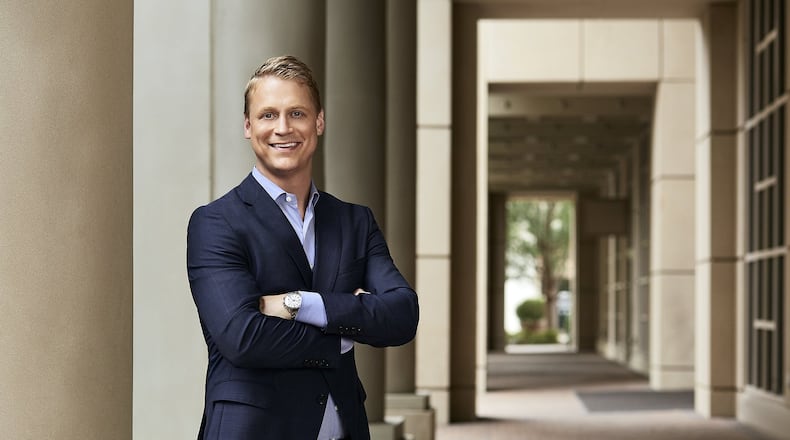A year ago, amidst the throes of COVID lockdown, my regular commute became warp speed from my home in Midtown Atlanta to my Sandy Springs office. Just 16 blissful minutes. Nowadays, my commute has devolved back into a bumper-to-bumper existential crisis.
This week, after the morning car pool, Waze suggested three separate routes. Each one offered dramatically different journeys, all with the same travel time.
It got me thinking about the nearly endless paths we can take as investors. Knowing where you want to end up is the most important part.
There are three steps to achieving your financial goals.
1. Choose where you’re going. Nearly all unsuccessful investing begins without a destination in mind (aka, set your retirement goals, including travel, core pursuits, volunteering, etc.).
2. Calculate the steps and income it will take to reach these goals. Have a plan. How much money do you need to save each year and how much do you need to accumulate before you can retire? What year will you stop working and when will you pay off the mortgage?
3. Choose an investment path. Get comfortable with how your portfolio will be constructed over the life of that plan. Understanding and defining an investment strategy will give your plan the best chance for success.
Steps one and two are within your control, but step three presents an endless list of investment strategies.
Those who have read my book, “You Can Retire Sooner Than You Think,” know I always go back to my core philosophy — income investing.
The premise behind income investing is simple — generate cash flow from nearly all your investment holdings. Do this by owning stocks, bonds, real estate, private investments, and any other asset that can pay out a steady stream of dividends, interest, and/or distributions — a cash flow. The money received is reinvested to accelerate portfolio growth. You’ll continue this process until retirement, at which point the income from investments becomes your “paycheck” and allows you to do things you love.
Compare income investing to pure growth investing. With pure growth, you buy shares of companies that focus all their resources/profits on expansion/global domination. Think rapidly growing tech or biotech companies — stocks that may have a huge potential upside but don’t pay dividends. To generate cash flow with a pure growth portfolio, you’ll need to sell chunks of these stocks.
With income investing, we’re still expecting these investments to grow, but we’re bartering the hyper growth potential for predictable cash flow. The objective is to find predictable income AND capital appreciation. Rather than all-or-nothing, it’s some-and-something.
Now that we know how the goal of income investing works, let’s talk about how to make it happen. There’s a big picture method that I like to use, called the “Bucket System.” There are four asset groups, or buckets, that move you toward your goals.
Cash Bucket — This is your emergency “prevent-an-ulcer” fund. Ideally, you should have six months of living expenses in savings, money markets or CDs. Your yield will hover around zero because these vehicles live in a near zero interest rate world. That’s OK because our objective is financial stability and avoiding any price or value fluctuation.
Income Bucket — Contributions are invested in various bonds: Treasury, municipal, corporate, high-yield, international, and floating rate. Bonds can range from very safe (Treasuries) to very risky, with yields varying accordingly. It’s important to maintain a variety of bond types, a mix of duration (how long these bonds pay out until they mature), and a variety of yields (how much each bond category pays in interest each year). This can be anywhere from less than 1% all the way to the 7%-plus range for high-yield (junk) bonds.
Growth Bucket — A mix of capital appreciation and dividend income. Hyper-fast-growth companies (think emerging vaccine companies or nanotech) could provide stellar appreciation over time. But, as an income investor, I like to see the majority of the stocks in this growth bucket also pay dividends. Higher dividend rates are easier to find in consumer staples, health care, utilities, telecom and energy sectors. Still, it’s not uncommon for established (but more mature) technology and consumer discretionary companies to also pay out healthy dividend yields. This type of stock can provide a certain level of predictability, making market fluctuations more palatable. For example, despite massive stock price volatility during 2020, total S&P 500 dividend payouts came in at $58.28 per share vs. $58.23 in 2019. 2018 total dividends paid at $53.74 vs. $48.93 in 2017. Markets change on a dime, but dividends tend to move steadily higher at a measured pace.
Alternative Bucket — A catchall that contains any asset that isn’t a traditional stock or bond. Think real estate investment trusts (REITs), preferred stocks, master limited partnerships (MLPs), closed-end funds, etc. This bucket typically provides higher current income than stocks and bonds but with elevated levels of risk. It’s your overall portfolio yield-enhancer, with yields ranging from 3% to 8% annually.
Now that we know where you want to go and how you get there, let’s finish up with a few snacks for the trip.
Keep in mind that “annual yield” for each bucket refers to the amount of cash flow you’ll receive from the group of assets contained within. Your total return will be influenced by price fluctuations of the underlying assets, and your overall return will differ depending on the percentage allocated to each bucket.
Once you have your buckets in place, it’s important to keep regular (but not obsessive) tabs on their performance. You’ll want to make adjustments, depending on life changes and financial goal fine-tuning.
Consider working with a trusted, qualified financial planner to discuss how to fund each bucket and how to maximize potential performance.
The road to the “Retire Sooner” promised land is fraught with twists and turns, brutal traffic, and countless forks in the road. But happy retirees know this and keep moving forward for the journey of a lifetime.
Wes Moss is the host of the podcast “Retire Sooner with Wes Moss,” found in the podcast app right on your smartphone. He has been the host of “Money Matters” on News 95.5 and AM 750 WSB in Atlanta for more than 10 years now, and he does a live show from 9-11 a.m. Sundays. He is the chief investment strategist for Atlanta-based Capital Investment Advisors. For more information, go to wesmoss.com.
DISCLOSURE
This information is provided to you as a resource for informational purposes only and is not to be viewed as investment advice or recommendations. Investing involves risk, including the possible loss of principal. There is no guarantee offered that investment return, yield, or performance will be achieved. There will be periods of performance fluctuations, including periods of negative returns and periods where dividends will not be paid. Past performance is not indicative of future results when considering any investment vehicle. This information is being presented without consideration of the investment objectives, risk tolerance, or financial circumstances of any specific investor and might not be suitable for all investors. This information is not intended to, and should not, form a primary basis for any investment decision that you may make. Always consult your own legal, tax, or investment adviser before making any investment/tax/estate/financial planning considerations or decisions. Investment decisions should not be made solely based on information contained in this article. The information contained in the article is strictly an opinion and for informational purposes only and it is not known whether the strategies will be successful. There are many aspects and criteria that must be examined and considered before investing.
About the Author
Keep Reading
The Latest
Featured


